 W
WAcushnet – a steel-hulled revenue cutter – was launched on 16 May 1908 at Newport News, Virginia, by the Newport News Shipbuilding and Drydock Co.; sponsored by Miss Alayce Duff; and commissioned at Baltimore on 6 November 1908. She saw service as a United States Revenue Cutter Service cutter, a U.S. Navy fleet tug, and as a U.S. Coast Guard cutter. She was taken out of service 8 January 1946.
 W
WBetween 1865 and 1866, five cutters of the Chase Class were constructed for the Revenue Cutter Service. These cutters were named: Chase, Fessenden, Johnson, McCulloch and Sherman. They were wooden-hulled side-wheel steamers and powered by walking-beam steam engines. Their hulls were constructed with iron diagonal bracing for added strength. They were designed for operations on the Great Lakes. However, the McCulloch served in the Gulf of Mexico and the Atlantic.
 W
WSS Bear was a dual steam-powered and sailing ship built with six-inch (15.2 cm)-thick sides which had a long life in various cold-water and ice-filled environs. She was a forerunner of modern icebreakers and had a diverse service life. According to the United States Coast Guard official website, Bear is described as "probably the most famous ship in the history of the Coast Guard."
 W
WUSRC George S. Boutwell was a revenue cutter of the United States Revenue Cutter Service that served from 1873 to 1907 designed for cruising the southern coasts. She was named for George S. Boutwell, the 28th United States Secretary of the Treasury.
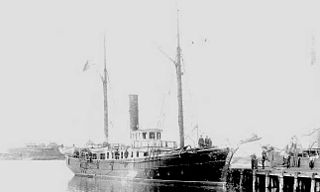 W
WUSRC Dexter was a Dexter-class cutter of the United States Revenue Cutter Service in commission from 1874 to 1908. She was the second ship of the Revenue Cutter Service to bear the name. The other Dexter-class cutters, all commissioned in 1874, were Dallas and Rush. Dexter was built by the Atlantic Works Company at Boston, Massachusetts. Captain John A. Henriques accepted her for service on 6 June 1874, and she was commissioned into the Revenue Cutter Service on 18 June 1874. Her role in the rescue of passengers from a sinking passenger ship under winter gale winds brought her nationwide popular acclaim.
 W
WUSRC Gallatin, was a Gallatin Class revenue cutter of the United States Revenue Cutter Service in commission from 1874 to 1892. She was the fourth ship of the Revenue Cutter Service to bear the name, and was also known as Albert Gallatin.
 W
WUSRC Grant was a rare, three-masted revenue cutter built in 1870 and 1871 by Pusey & Jones Corporation in Wilmington, Delaware. She served the United States Revenue Cutter Service in both the Atlantic and Pacific preventing smuggling and protecting shipping. At the outbreak of the War with Spain, she was ordered to cooperate with the Navy 11 April 1898. Throughout the conflict, she patrolled the Pacific coast and was returned to the Treasury Department 15 August 1898. Grant continued to serve the Revenue Cutter Service in the Pacific until sold to A. A. Cragin of Seattle, Washington on 28 November 1906.
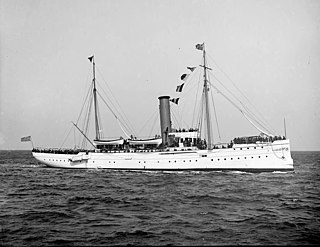 W
WUSRC Gresham was a cruising cutter and auxiliary gunboat built for the United States Revenue Cutter Service to patrol the Great Lakes. She was one of a series of cutters named for former U.S. Secretaries of the Treasury. Her namesake Walter Q. Gresham served as the 35th Secretary of the Treasury in 1884 and died in 1895 while serving as the 33rd U.S. Secretary of State. She became part of the newly created United States Coast Guard in 1915, and also served as a coastal convoy escort and patrol boat under United States Navy control during both World War I and World War II. After being decommissioned by the Coast Guard in 1944, she eventually came under Israeli control in 1947. She carried Jewish refugees from Italy to Palestine and later served in the fledgling Israeli Navy until 1951.
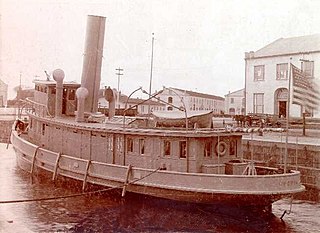 W
WUSRC Hudson, known for her service during the Battle of Cárdenas, was the United States Revenue Cutter Service's first vessel to have a steel hull and triple-expansion steam engine.
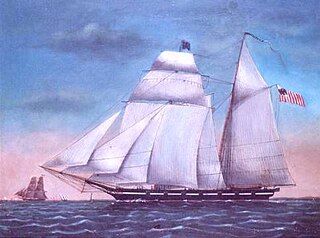 W
WThe United States Revenue Cutter Jackson was one of 13 cutters of the Morris-Taney Class to be launched. Named after Secretaries of the Treasury and Presidents of the United States, these cutters were the backbone of the Revenue Cutter Service for more than a decade. Samuel Humphreys designed these cutters for roles as diverse as fighting pirates, privateers, combating smugglers and operating with naval forces. He designed the vessels on a naval schooner concept. They had Baltimore Clipper lines. The vessels built by Webb and Allen, designed by Isaac Webb, resembled Humphreys' but had one less port.
 W
WUSRC James C. Dobbin was a topsail schooner of the Cushing class (1853) named after President Franklin Pierce's Secretary of the Navy, James Cochrane Dobbin. She was initially stationed at Wilmington, North Carolina, but in 1856 was moved to Savannah, Georgia. She was seized by a secessionist mob on 3 January 1861 at Savannah and the officers and crew were held in irons. After the local customs inspector protested the seizure, Joseph E. Brown, the governor of Georgia ordered the cutter and crew released. Dobbin was the only revenue cutter based in the South to escape to the North before the Civil War. On 26 April 1861, she was ordered to Philadelphia, Pennsylvania to receive heavier armament and then assigned to New York City. In 1863 Dobbin was reassigned to Portland, Maine where she remained until being ordered to Baltimore, Maryland in December, 1876 to be refitted as a training ship. The first eight cadets of the newly established Revenue Cutter School of Instruction reported aboard Dobbin and they set sail on their first practice cruise on 24 May 1877. One of the eight cadets was future Commandant of the Coast Guard, Worth G. Ross. The following summer, she was replaced by the newly constructed training cutter USRC Salmon P. Chase and Dobbin returned to service as a revenue cutter until she was sold in 1881.
 W
WUSRC Jefferson Davis was a United States Revenue Cutter Service topsail schooner of the Cushing class built in 1853. She was named for Jefferson Davis, then United States Secretary of War under President Franklin Pierce, and later president of the Confederate States of America.
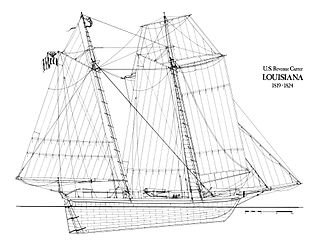 W
WUSRC Louisiana, was a wood hull topsail schooner designed by William Doughty that was commissioned in the United States Revenue Marine from 1819 to 1824. Assigned the homeport of New Orleans, Louisiana, she sailed the Caribbean extensively and was used mainly in anti-piracy activity.
 W
WUSRC Mackinac, later USCGC Mackinac, was a patrol boat that served in the United States Revenue Cutter Service from 1903 to 1915 and in the United States Coast Guard from 1915 to 1917 and from 1919 to 1939.
 W
WUSRC Manning was a revenue cutter of the United States Revenue Cutter Service that served from 1898 to 1930, and saw service in the U.S. Navy in the Spanish–American War and World War I.
 W
WMassachusetts II was a small sloop operated by the Revenue-Marine used in the collection of customs duties. She was completed in June 1793 and replaced Massachusetts, one of the first ten cutters of the Revenue-Marine, when it was determined that the older ship was too large and slow to perform her assigned tasks. Massachusetts II was constructed by Adna Bates of Cohasset, Massachusetts for a cost of US$1,600. Her area of operation was along the Massachusetts coast as a smaller less expensive replacement to the original Massachusetts. When the original Massachusetts was sold at auction, the second and third mates were discharged and Massachusetts II was crewed by two officers and four sailors.
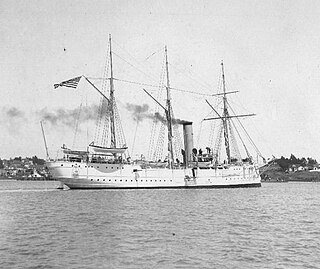 W
WUSS McCulloch, previously USRC McCulloch and USCGC McCulloch, was a ship that served as a United States Revenue Cutter Service cutter from 1897 to 1915, as a United States Coast Guard Cutter from 1915 to 1917, and as a United States Navy patrol vessel in 1917. She saw combat during the Spanish–American War during the Battle of Manila Bay and patrolled off the United States West Coast during World War I. In peacetime, she saw extensive service in the waters off the U.S. West Coast. She sank in 1917 after colliding with another steamer.
 W
WUSRC Mohawk, was a steel steam powered revenue cutter built for the U.S. Revenue Cutter Service by William R. Trigg Company at Richmond, Virginia. Her primary duties in the Revenue Cutter Service and Coast Guard were assisting vessels in distress and enforcing navigational laws as well as a derelict destroyer. Mohawk was sunk after a collision with another vessel in October 1917.
 W
WUSRC Naugatuck was a twin-screw ironclad experimental steamer operated by the U.S. Revenue Cutter Service during the American Civil War. She served the U.S. Treasury Department as the USRC E.A. Stevens, a name she retained until sold in 1890. She was loaned to the Navy by the Treasury Department and thus mistakenly referred to in U.S. Navy dispatches during early 1862 as "USS Naugatuck".
 W
WUSRC Onondaga was an Algonquin-class cutter built for the U.S. Revenue Cutter Service for service on the Great Lakes. Because of the Spanish–American War, she was cut in half shortly before completion and transported to Ogdensburg, New York for service on the Atlantic coast although the war ended before she could be put into service. After the formation of the United States Coast Guard in 1915 she became USCGC Onondaga. She served as a patrol vessel at various Atlantic coast ports before World War I and unlike most Coast Guard cutters during World War I, she remained under the control of the Commandant of the Coast Guard. After the war she patrolled for a brief time based at New London, Connecticut before being decommissioned in 1923.
 W
WUSRC Pamlico was a revenue cutter of the United States Revenue Cutter Service that served from 1907 to 1946 designed specifically to cruise inland waters and did so while stationed at New Bern, North Carolina her entire career.
 W
WCSS Pickens was a Cushing-class schooner revenue cutter that saw service in the navies of the United States and Confederate States of America. Built as Robert McClelland in Somerset, Massachusetts, in 1853, she served along the coasts of Louisiana and Texas before transferring her crew and officers to USRC Washington in 1859 and heading to New York for repairs. In 1860, Robert McClelland reported to South West Pass, Mississippi, and was permanently assigned to New Orleans, Louisiana, later that year. After the 1861 secession of Louisiana, her commander turned her over to the state. She entered Confederate service on February 18 and was renamed Pickens. Pickens played a minor role in the Battle of the Head of Passes before being burned to prevent capture on April 25, 1862, after Union Navy forces entered New Orleans.
 W
WUSS Pickering was a topsail schooner in the United States Revenue Cutter Service and then the United States Navy during the Quasi-War with France. She was named for Timothy Pickering, then the Secretary of State.
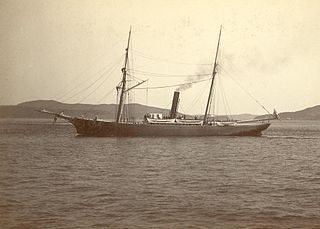 W
WUSRC Rush was a revenue cutter named for Richard Rush, eighth Secretary of the Treasury. She was a replacement for USRC Rush and was much larger, but re-used the engine from the first Rush. She was completed in November 1885. In January 1886, soon after commissioning, she was assigned to search for the whaler Amethyst, last seen in the Bering Sea the previous October.
 W
WUSRC Salmon P. Chase was named after Abraham Lincoln's Secretary of the Treasury, Salmon Portland Chase. It was a three-masted bark with a hull length of 106 feet that was designed for use as a training ship for the cadets of the Revenue Cutter Service School of Instruction.
 W
WUSRC Seminole was a 188 ft (57 m), 845-ton United States Revenue Cutter Service steamer constructed by the Columbian Iron Works in Baltimore, Maryland for $141,000. She was commissioned in 1900 and saw service through 1934, when she was transferred to the Federal Emergency Relief Administration.
 W
WUSCGC Seneca, or before 1915 USRC Seneca, was a United States Coast Guard cutter built and commissioned as a "derelict destroyer" with the specific mission of locating and then destroying abandoned shipwrecks that were still afloat and were a menace to navigation. She was designed with excellent sea-keeping qualities, a long cruising range, good towing capabilities, and by necessity the capacity to store a large amount of munitions. She was one of five Coast Guard cutters serving with the U.S. Navy in European waters during World War I.
 W
WThe USRC Snohomish was a 152 ft (46 m) seagoing tug built at the specific direction of Congress by Pusey & Jones, Wilmington, Delaware for service on the Pacific Northwest coast. She was fitted with latest lifesaving and property saving equipment available at the time of her construction and originally cost $189,000. She was commissioned by the United States Revenue Cutter Service on 15 November 1908 and arrived at her homeport of Neah Bay, Washington by way of passage around Cape Horn in 1909.
 W
WUSRC Surveyor was a ship of the United States Revenue Marine captured by the United Kingdom during the War of 1812. Despite the vessel's loss, the "gallant and desperate" defense of her crew against a superior force of the Royal Navy and the Corps of Royal Marines is commemorated by the United States Coast Guard. Along with the Royal Navy frigate which bested her in battle, HMS Narcissus, Surveyor is among six legendary ships memorialized in the lyrics of the Coast Guard march "Semper Paratus".
 W
WUSRC Tahoma, was a steel-hull flush deck cutter that served in the United States Revenue Cutter Service from 1909 to 1914 with the Bering Sea Patrol and was the sister ship to the USRC Yamacraw.
 W
WThe first USS Thetis was a three-masted, wooden-hulled steam whaler in the United States Navy used to rescue a polar expedition and later in the Revenue Cutter Service.
 W
WThe first USS Thetis was a three-masted, wooden-hulled steam whaler in the United States Navy used to rescue a polar expedition and later in the Revenue Cutter Service.
 W
WThe Thomas Corwin was a United States revenue cutter and subsequently a merchant vessel. These two very different roles both centered on Alaska and the Bering Sea. In 1912, Frank Willard Kimball wrote: "The Corwin has probably had a more varied and interesting career than any other vessel which plies the Alaskan waters."
 W
WUSCGC Unalga (WPG-53) was a Miami-class cutter that served in the United States Revenue Cutter Service and later the U.S. Coast Guard and U.S. Navy. The early part of her career was spent patrolling the Pacific coast of the United States and the Bering Sea. After 1931 she did patrol work off Florida and in the Caribbean. After Unalga was sold in 1946, she was renamed after Jewish Agency leader Haim Arlosoroff and used for six months for moving Jewish refugees from Europe to Palestine before being forced to run aground by British Navy ships near Haifa.
 W
WUSCGC Unalga (WPG-53) was a Miami-class cutter that served in the United States Revenue Cutter Service and later the U.S. Coast Guard and U.S. Navy. The early part of her career was spent patrolling the Pacific coast of the United States and the Bering Sea. After 1931 she did patrol work off Florida and in the Caribbean. After Unalga was sold in 1946, she was renamed after Jewish Agency leader Haim Arlosoroff and used for six months for moving Jewish refugees from Europe to Palestine before being forced to run aground by British Navy ships near Haifa.
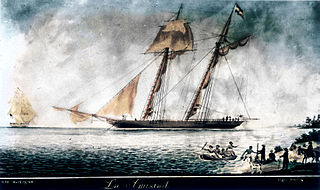 W
WWashington was a revenue cutter that served in the United States Revenue Cutter Service and in the United States Navy. She discovered, boarded and captured La Amistad after the slaves onboard had seized control of that schooner in an 1839 mutiny.
 W
WUSRC Wolcott, the second ship of the name, sometimes referred to as USRC Oliver Wolcott, was a revenue cutter in commission in the United States Revenue-Marine from 1873 to 1894 and in the United States Revenue Cutter Service from 1894 to 1897. She served in the waters of the Territory of Alaska during her career. After her revenue cutter service, she operated as a merchant vessel until she was wrecked in 1900.
 W
WUSRC Yamacraw, was a steel-hull flush-deck cutter that served in the United States Revenue Cutter Service from 1909 to 1937 and was the sister ship to the USRC Tahoma.